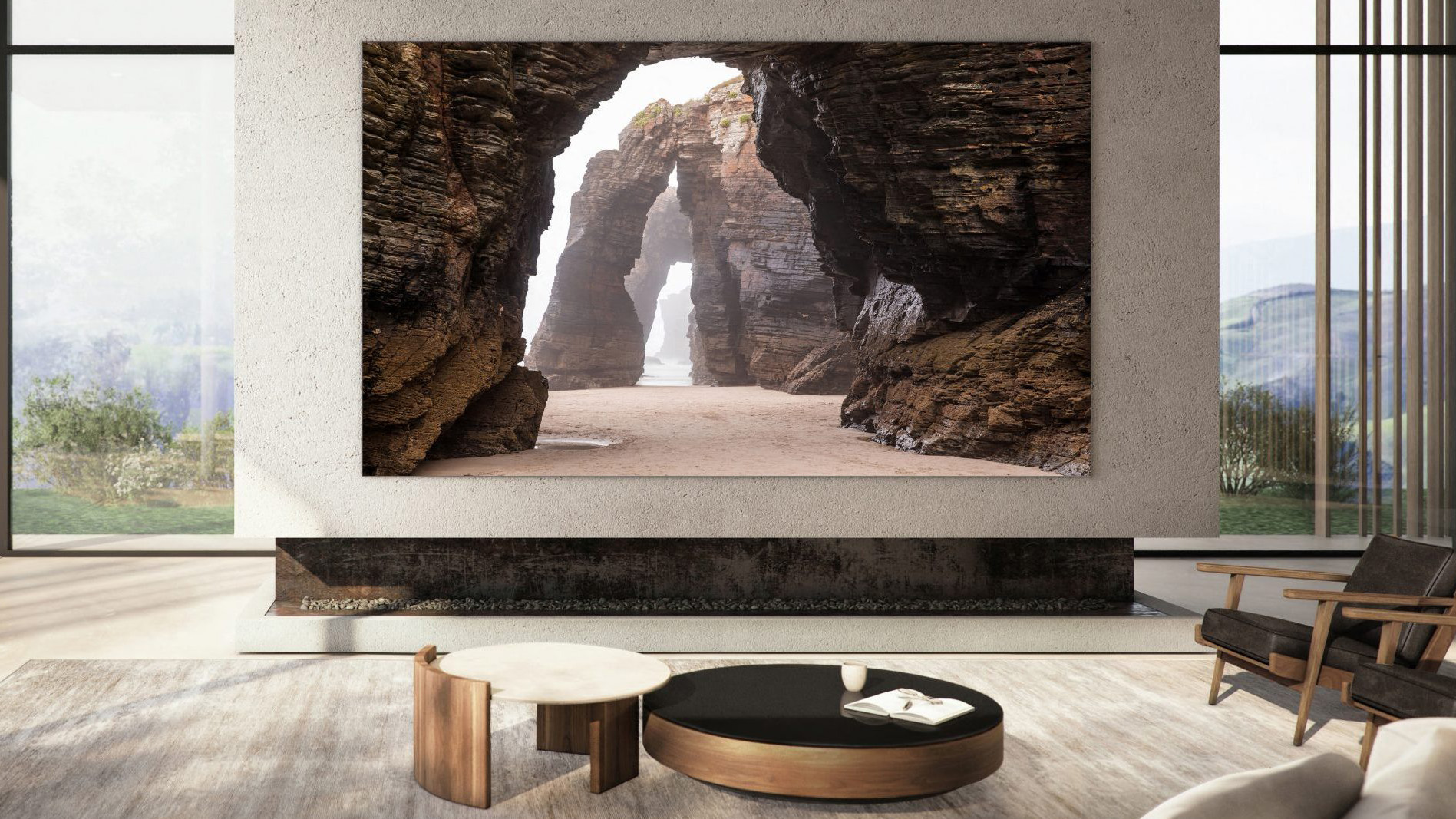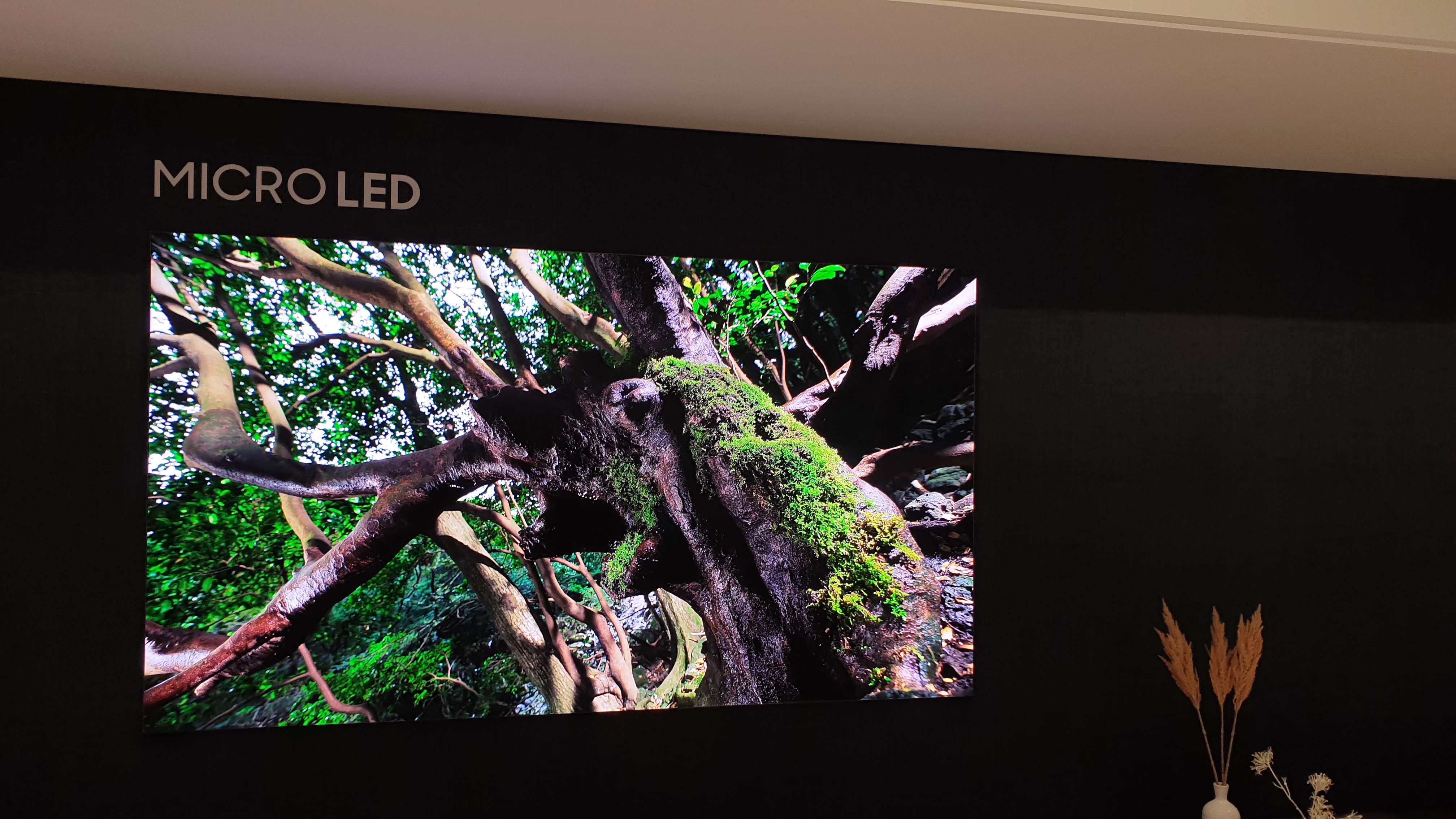The tide is finally turning for Samsung's next-gen micro-LED 4K TV tech
But not small enough for most of us

We recently reported that Samsung’s pioneering micro-LED TVs – the next-gen tech that offers all the contrast advantages of OLED TVs, with the longer life and higher brightness of LED TVs, in theory – are further away from becoming realistic in home than we hoped.
However, the good news is that Samsung is finally ready to take the first steps towards making that a reality, according a report from The Elec. Samsung originally launched a micro-LED 4K TV in 2021 at a generous size of 110 inches, but promised that smaller models would launch shortly after that.
Only they didn’t. Pandemic factory closures and production issues, followed by a total relocation to a new factory, mean that Samsung hasn’t gotten around to even starting production of smaller models, let alone launching them, despite announcing new sizes in 2022.
But the report from The Elec says that Samsung is planning to finally change that soon (in “Q3”, which means somewhere in July to September), and will start production of an 89-inch micro-LED 4K TV using a new TFT-based manufacturing process, which should be what gives it the smaller size it needs to fit its advanced 34x85-micrometer LED chips into a screen smaller than 100 inches. The Elec says Samsung is likely to use the same technology for a 101-inch and 114-inch model too (with the latter replacing the original 110-inch offering).
Now, 89 inches is obviously still far, far bigger than most of us will even want for a TV, and is still much bigger than the 76-inch model Samsung promised us back in 2021. A 76-inch model is where the size starts to become realistic for more people – the best 75-inch TVs have been growing in popularity in the last few years – so we hope getting the size down to this level will be Samsung’s next technological hurdle to overcome, and that it can move to 55- to 65 inches from there.
But the other hurdle is the even bigger one: price. Samsung originally set the price of the 89-inch model to $80,000 – we won’t know what the final price will be until Samsung is ready to actually launch it, of course, which could well be next year, depending on how successful the new production process is.

Analysis: micro-LED is the future. But, like, in the actual future
The reason micro-LED is exciting is that it uses self-lighting pixels, just like the best OLED TVs, meaning that each pixel can control its brightness individually. So you get perfect precision in contrast between light areas and dark areas, and infinitely deep black levels.
Get daily insight, inspiration and deals in your inbox
Sign up for breaking news, reviews, opinion, top tech deals, and more.
But micro-LED will be be able to go much brighter than OLED TVs can – hitting 2,000 nits initially, according to Samsung, but perhaps as high as 4,000 nits in the future. By comparison, the likes of the LG G2 are only pushing 1,000 nits.
That means you'll get even more spectacular and realistic HDR performance, and it should mean the TVs' images are simply more visible in sunny rooms, without reflections taking over the screen in dark areas. And on top of that, they should have longer lifespans than OLED TVs.
However, despite the core technology having existed for a little while – and it's regularly in use for advanced digital signage from Sony, Samsung and LG – making it small enough for high-res TVs is clearly a struggle. Only Samsung is really trying to make it for consumers so far, and it's been unable to put it in anything for the rest of us so far.
The $80,000 price for the 89-inch model above is still a huge price drop compared to the original version – about a 40% drop. Even if Samsung is able to keep dropping the price by 40% every two years, it'll still take eight years even to reach $10,000 for a TV, which is still pretty damn high-end – but it's in line with the best 85-inch TVs with premium tech.
So unless some pretty big things change (which they often do), micro-LED TVs look like they're still a long way off for most of us.

Matt is TechRadar's Managing Editor for Entertainment, meaning he's in charge of persuading our team of writers and reviewers to watch the latest TV shows and movies on gorgeous TVs and listen to fantastic speakers and headphones. It's a tough task, as you can imagine. Matt has over a decade of experience in tech publishing, and previously ran the TV & audio coverage for our colleagues at T3.com, and before that he edited T3 magazine. During his career, he's also contributed to places as varied as Creative Bloq, PC Gamer, PetsRadar, MacLife, and Edge. TV and movie nerdism is his speciality, and he goes to the cinema three times a week. He's always happy to explain the virtues of Dolby Vision over a drink, but he might need to use props, like he's explaining the offside rule.